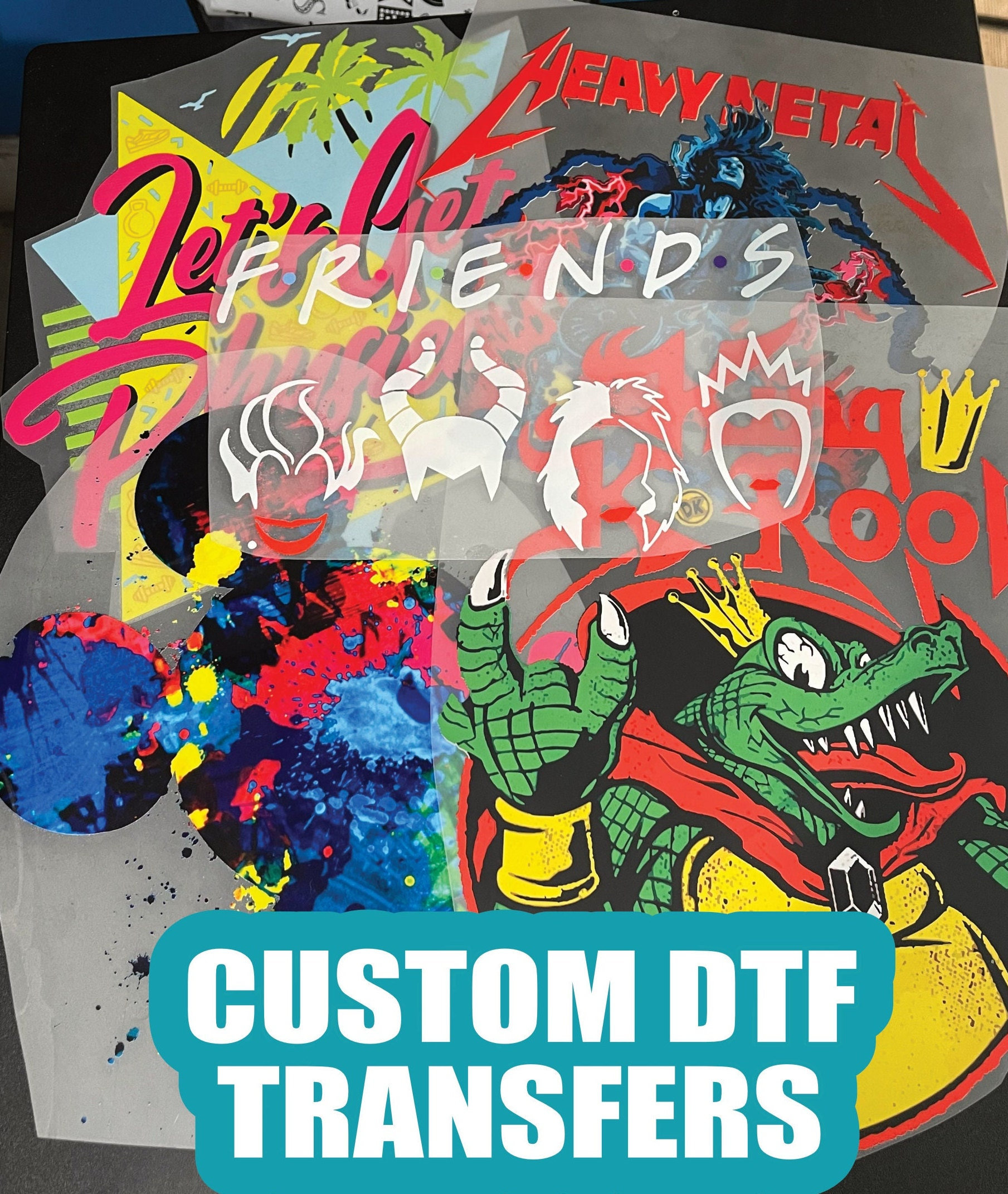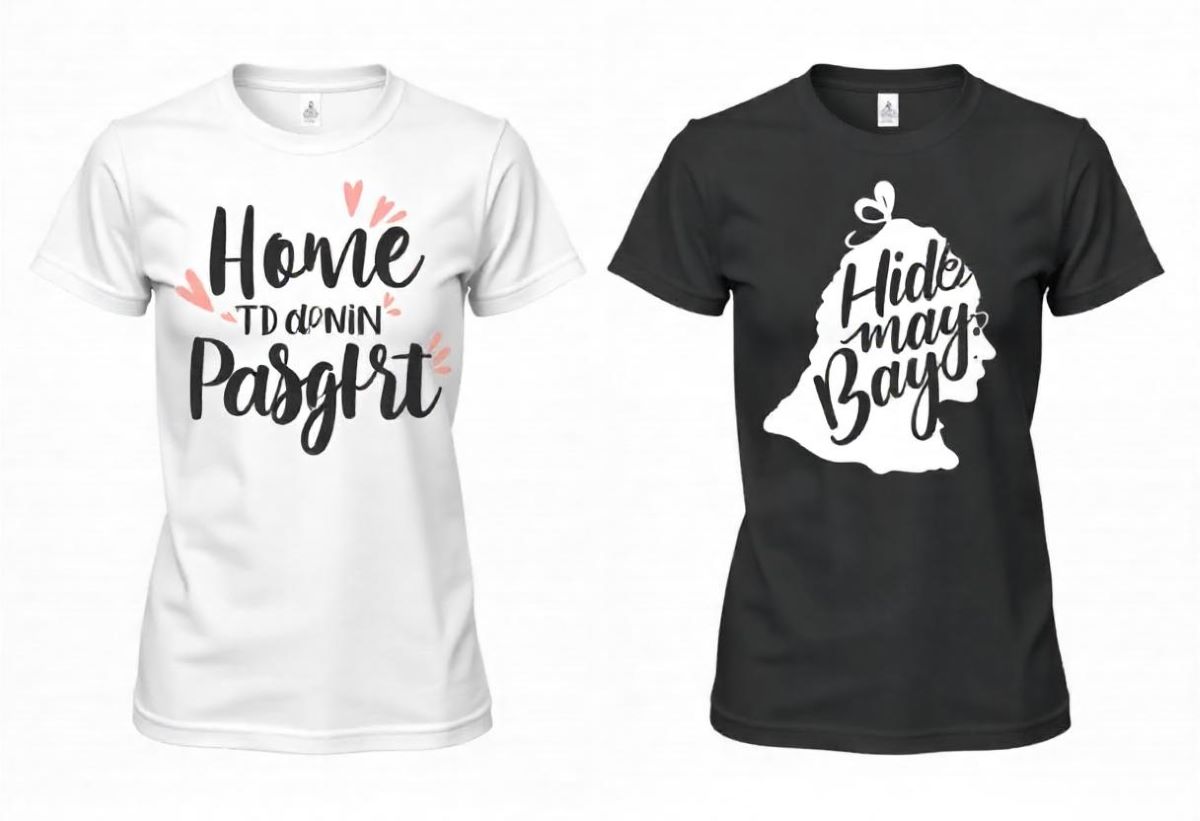**DTF Transfers** are transforming the landscape of custom apparel printing, providing a modern solution for individuals and businesses alike. This innovative process, known as Direct to Film printing, allows for vibrant, full-color designs to be transferred onto fabrics with remarkable ease and precision. The DTF printing process involves a unique series of steps that ensure high-quality results, making it an attractive option for those looking to create custom designs. With numerous benefits of DTF transfers, including versatility across various fabric types and cost-effectiveness for short production runs, it’s no wonder that this technology is quickly gaining traction. In this overview, we will delve into the intricacies of DTF transfer technology, exploring everything from the printing process to the latest market trends.
In the realm of modern printing techniques, the use of film transfers has become a hot topic among enthusiasts and professionals. Often referred to as Direct to Film or DTF printing, this method enables the creation of stunning graphics on textiles, making it ideal for anyone engaged in custom garment production. The advantages of using film for transfers include impressive color reproduction and adaptability to various materials, which are critical for high-quality apparel creations. This innovative technology stands out not only for its flexibility but also for its cost-efficient approach to short-run printing projects. As we explore the DTF process further, we’ll uncover its key steps, benefits, and potential limitations in order to understand its burgeoning popularity in the custom printing market.
Understanding the DTF Printing Process
The DTF (Direct to Film) printing process starts with the careful selection of high-quality PET film. Once the design is finalized, it is printed using specialized DTF ink that delivers vibrant colors and intricate details. The use of pigments allows for a broader color spectrum compared to traditional methods such as screen printing or vinyl transfer, making it ideal for custom apparel printing and detailed graphics. The initial printing stage sets the foundation for the success of the transfer, ensuring that the design truly captures the intended look and feel.
After printing, the film undergoes a crucial step where a thermoplastic adhesive powder is applied while the ink remains wet. This unique combination is essential for achieving a strong bond during the heat transfer process. The printed, powder-coated film is then cured using heat, which melts the adhesive and binds it with the ink. The final heat pressing step transfers the design onto the selected substrate, creating a long-lasting print that adheres effectively to a variety of fabrics, including cotton and polyester.
Benefits of DTF Transfers for Custom Apparel
DTF transfers offer several distinct advantages for businesses involved in custom apparel printing. Firstly, they produce vibrant, multicolored designs that are capable of capturing intricate details. Unlike other printing techniques where color blending can cause issues, DTF creates stunning visuals without compromising the overall appearance. This capability is particularly appealing for small brands and start-ups aiming to make an impactful statement in a competitive market.
Additionally, DTF technology demonstrates remarkable versatility in terms of fabric compatibility. Whether it’s cotton, polyester, or blended materials, DTF transfers can adhere effectively, making them an ideal choice for a wide array of products ranging from t-shirts to promotional bags. This adaptability opens the door for innovative design possibilities, allowing businesses to expand their product offerings without incurring high production costs.
The Durability of DTF Transfers
When discussing DTF transfers, durability is a critical factor to consider. While DTF offers promising results, the longevity of the print can vary based on materials and application methods used. Some users have reported that, over time, certain prints may lose their vibrancy or begin to peel, particularly if proper care isn’t taken during washing and drying. Understanding the importance of using high-quality inks and following manufacturer recommendations can greatly enhance the durability of DTF prints.
However, it’s worth noting that advancements in DTF printing technology are continually addressing these durability concerns. Manufacturers are developing better inks and transfer adhesives that provide increased wear resistance and longevity. As the DTF printing process matures, users can expect improvements in durability and overall print quality, making it a more reliable choice for both businesses and customers.
Emerging Trends in DTF Technology
As technology evolves, the landscape of DTF printing is undergoing significant changes. One of the most notable trends is the growing popularity of eco-friendly inks and sustainable practices within the DTF community. Many manufacturers are shifting towards water-based inks and recyclable films, appealing to environmentally conscious consumers and businesses. This commitment to sustainability not only enhances the marketability of products but also aligns with global initiatives to reduce waste and pollution.
Another emerging trend in DTF printing technology is the rise of automation in the production process. As equipment for DTF printing becomes more sophisticated, many businesses are investing in fully automated printing systems that facilitate faster production times and improved efficiency. This trend not only streamlines workflows but also allows companies to tackle larger orders while maintaining high-quality standards. With these advancements, DTF is set to impact significantly on how custom apparel is produced in the coming years.
Cost Implications of DTF Transfers
Investing in DTF transfer technology can represent a significant financial commitment, particularly for small business owners and start-ups. The initial costs associated with purchasing the necessary equipment, such as DTF printers, inks, and curing systems, may deter some entrepreneurs. However, the cost-per-print is relatively inexpensive for short runs compared to traditional methods like screen printing, making DTF an attractive option for custom apparel businesses that may not have the capacity for large orders.
Beyond equipment, operational costs such as materials and maintenance should also be factored in. It’s essential for businesses to conduct a thorough cost-benefit analysis to determine the potential return on investment. As production volumes increase, the cost efficiencies achieved through DTF transfers can lead to substantial savings, demonstrating that, despite the initial outlay, the long-term financial benefits can be significant for those committed to this innovative printing method.
Future Outlook of DTF in the Custom Apparel Industry
The future of DTF printing within the custom apparel industry appears promising as demand for personalized merchandise continues to rise. Market analysts predict that by 2025, DTF technology will become increasingly prevalent, particularly among e-commerce businesses striving for unique solutions without compromising quality. As brands recognize the value of custom designs, DTF is likely to play an integral role in fulfilling consumer desires for individuality and personalization.
Furthermore, as the technology matures, we can expect to see ongoing innovations in DTF printing that enhance not only quality but also efficiency. These advancements will contribute to a competitive market where businesses are continually seeking ways to differentiate themselves through high-quality prints and unique designs. As such, understanding and implementing DTF transfers will prove crucial for companies looking to remain relevant and successful in the ever-evolving landscape of fashion and merchandise.
Frequently Asked Questions
What are DTF transfers and how do they work?
DTF transfers, or Direct to Film transfers, utilize a unique printing process where ink is printed onto a PET film. The water-based DTF inks allow for vibrant, full-color designs which are then coated with a thermoplastic adhesive powder. After curing, the film is heat pressed onto garments, adhering the design to various textiles like cotton and polyester.
What are the benefits of using DTF transfers for custom apparel printing?
The benefits of DTF transfers in custom apparel printing include vibrant colors and detailed designs, compatibility with a wide range of fabrics, and cost-effectiveness, especially for small production runs. This versatile technology allows businesses to create high-quality products quickly, making it an optimal choice for custom applications.
How does the DTF printing process differ from traditional printing methods?
Unlike traditional printing methods such as screen printing or heat transfer vinyl, the DTF printing process allows for direct application of full-color images onto various fabrics through a film. This method eliminates the need for complex setups and is particularly effective for detailed and multicolor designs, making it easier for small businesses to produce custom apparel efficiently.
What types of materials can DTF transfers be used on?
DTF transfers are incredibly versatile and can be used on a variety of materials, including cotton, polyester, and blends. This adaptability makes DTF technology ideal for diverse projects, whether you’re creating custom t-shirts, bags, or other fabric items.
What should I consider about the durability of DTF transfers?
While DTF transfers can produce stunning results, the durability of the prints can vary depending on the quality of the inks, adhesive, and curing process used. It’s important to work with reliable materials and manufacturers to ensure your DTF prints withstand wear and tear over time without fading.
What are the latest trends in DTF transfer technology?
Recent trends in DTF transfer technology include the development of eco-friendly inks and sustainable PET films to meet growing environmental concerns. Additionally, advancements in automation have simplified the printing process, allowing for quicker production speeds and greater efficiency in high-volume applications.
| Key Point | Description |
|---|---|
| What are DTF Transfers? | DTF transfers print ink onto PET film, allowing for vibrant designs on textiles. |
| The DTF Transfer Process | Involves printing, powder adhesive application, curing, and heat pressing. |
| Advantages of DTF Transfers | Includes vibrant designs, versatile fabric compatibility, and cost-effectiveness for short runs. |
| Potential Drawbacks | Durability issues and initial investment in equipment can be a concern. |
| Recent Developments | Focus on eco-friendly inks and automation trends in machinery. |
| Market Trends | Increasing demand in custom apparel and personalized merchandise. |
Summary
DTF Transfers have revolutionized the printing industry by providing a versatile and high-quality method for applying designs on fabric. This innovative technique allows businesses to create vibrant, multicolored designs easily, making it suitable for a wide range of textiles like cotton and polyester. Despite some challenges, such as durability concerns and initial setup costs, the advantages of DTF Transfers—including cost-effectiveness for short runs—have made it increasingly popular among small businesses and custom apparel creators. As the technology continues to evolve with eco-friendly practices and automation, DTF Transfers are expected to play a significant role in the future of printing, catering to the growing demand for personalized merchandise.



